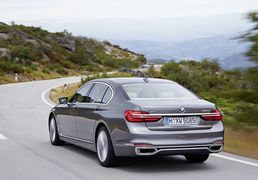THERE is an apartment complex near where I live that will make the people at Ford feel proud. Every day a stream of white Ford Figos pours out into the traffic. Seriously, everyone has a white Figo. Except one person, who has a Fiat Punto. I enquired as to the phenomenon and found out that the building is rented by a company and the Figos are all company vehicles.
The same is true when you drive past most rental companies. Figos and VW Polo Vivos as far as the eye can see. The entry-level model from the Blue Oval has always represented good value — not surprising as it was basically a rebadged old Fiesta.
That is no longer the case with the new generation, which has its own identity inside and out. The exterior looks take on Ford’s Kinetic 2.0 design language, but you will be forgiven for thinking it looks a little Chinese. That is not surprising, given this is the company’s latest global car aimed at key markets such as SA, India and China.
According to Liz Venter, Ford southern Africa’s B-car brand manager, the design was central to the new Figo and it definitely looks radically different to the last generation. Elements echo the design of other models such as the Fiesta and Focus which give it a family look, and it all works rather well.
You also get the choice of a hatch or a sedan for the first time, with the demise of the little Ikon. Strangely the boot space on the hatch is actually smaller by 27l but you get loads of space in the boot of the sedan.
Climb inside and the family look continues, particularly in the centre console. There is a vast dashboard which while made of hard plastics, does not actually look cheap. Opt for the Titanium spec and you get silver centre console trim in the hatch and piano black in the sedan. It all has a far more upmarket look than the previous generation. Actually, it looks a bit Fiesta.
And there is no doubt that the lines between the Figo and the Fiesta blur a little, particularly when it comes to price. At the end of its life, there were only three versions of the previous generation Figo available, priced between R147,900 and R157,900. The new model starts at R158,900 for the 1.5 Ambiente hatch. That will be a hard pill for many to swallow, not least of all the rental companies which were probably hoping for a lower entry point. It is not inconsistent with the price of some rivals, but I did not expect the price to be hiked quite so much. Opt for the range-topping Titanium models and you are looking at more than R200,000, well into Fiesta territory. Granted you will pay more for the top spec Fiesta, but lower down the line-up you get a fair amount of kit and more space than in the Figo.
We put both derivatives through their paces in the area around Broederstroom, north of Joburg. Initially we headed out of town in the 1.5 petrol hatch with the engine size increased from the previous 1.4. It should have been a good choice except for the Powershift automatic gearbox which failed to transmit the power effectively or quietly. Unless you drive limited kilometres, I would not recommend the auto option. It is likely to prove annoying rather quickly.
The sedan was surprisingly comfortable. It handled bumpy backroads well and could easily provide comfort for four on a long-distance jaunt. The steering is good and the level of noise insulation excellent.
Even more relaxed was the turbodiesel with a manual box. You do have the chore of changing gears but the engine was extremely responsive and the combination even allowed for a bit of hard cornering antics.
You do get lots of kit, including some simple but clever innovations. Basic models have MyFord Dock, a plastic cover in the top of the dash that opens up and then grips your smartphone. Plug into the USB port and you can stream your music or use the satnav as though it is an integrated system. Higher models get Ford’s Sync infotainment system, doing all of this wirelessly.
Titanium models also get MyKey. This clever key can be programmed to prevent the car exceeding a certain speed limit. It can also stop the audio system from starting if occupants do not have their seat belts on.
All models have ABS, and basic models get driver and passenger airbags while high spec versions get six.
While some of the doors felt a little tinny on closing and some of the plastics are a bit low rent, the overall ambience of the new Figo is that of a much more upmarket model than the first generation. It might tread on the Fiesta’s toes a little, but as a package I was really impressed.
-
The design fits more with the latest Ford family look. Picture: QUICKPIC
-
The interior has a far more upmarket look and feel. Picture: QUICKPIC
-
The MyFord Dock is a useful feature. Picture: QUICKPIC
THERE is an apartment complex near where I live that will make the people at Ford feel proud. Every day a stream of white Ford Figos pours out into the traffic. Seriously, everyone has a white Figo. Except one person, who has a Fiat Punto. I enquired as to the phenomenon and found out that the building is rented by a company and the Figos are all company vehicles.
The same is true when you drive past most rental companies. Figos and VW Polo Vivos as far as the eye can see. The entry-level model from the Blue Oval has always represented good value — not surprising as it was basically a rebadged old Fiesta.
That is no longer the case with the new generation, which has its own identity inside and out. The exterior looks take on Ford’s Kinetic 2.0 design language, but you will be forgiven for thinking it looks a little Chinese. That is not surprising, given this is the company’s latest global car aimed at key markets such as SA, India and China.
According to Liz Venter, Ford southern Africa’s B-car brand manager, the design was central to the new Figo and it definitely looks radically different to the last generation. Elements echo the design of other models such as the Fiesta and Focus which give it a family look, and it all works rather well.
You also get the choice of a hatch or a sedan for the first time, with the demise of the little Ikon. Strangely the boot space on the hatch is actually smaller by 27l but you get loads of space in the boot of the sedan.
Climb inside and the family look continues, particularly in the centre console. There is a vast dashboard which while made of hard plastics, does not actually look cheap. Opt for the Titanium spec and you get silver centre console trim in the hatch and piano black in the sedan. It all has a far more upmarket look than the previous generation. Actually, it looks a bit Fiesta.
And there is no doubt that the lines between the Figo and the Fiesta blur a little, particularly when it comes to price. At the end of its life, there were only three versions of the previous generation Figo available, priced between R147,900 and R157,900. The new model starts at R158,900 for the 1.5 Ambiente hatch. That will be a hard pill for many to swallow, not least of all the rental companies which were probably hoping for a lower entry point. It is not inconsistent with the price of some rivals, but I did not expect the price to be hiked quite so much. Opt for the range-topping Titanium models and you are looking at more than R200,000, well into Fiesta territory. Granted you will pay more for the top spec Fiesta, but lower down the line-up you get a fair amount of kit and more space than in the Figo.
We put both derivatives through their paces in the area around Broederstroom, north of Joburg. Initially we headed out of town in the 1.5 petrol hatch with the engine size increased from the previous 1.4. It should have been a good choice except for the Powershift automatic gearbox which failed to transmit the power effectively or quietly. Unless you drive limited kilometres, I would not recommend the auto option. It is likely to prove annoying rather quickly.
The sedan was surprisingly comfortable. It handled bumpy backroads well and could easily provide comfort for four on a long-distance jaunt. The steering is good and the level of noise insulation excellent.
Even more relaxed was the turbodiesel with a manual box. You do have the chore of changing gears but the engine was extremely responsive and the combination even allowed for a bit of hard cornering antics.
You do get lots of kit, including some simple but clever innovations. Basic models have MyFord Dock, a plastic cover in the top of the dash that opens up and then grips your smartphone. Plug into the USB port and you can stream your music or use the satnav as though it is an integrated system. Higher models get Ford’s Sync infotainment system, doing all of this wirelessly.
Titanium models also get MyKey. This clever key can be programmed to prevent the car exceeding a certain speed limit. It can also stop the audio system from starting if occupants do not have their seat belts on.
All models have ABS, and basic models get driver and passenger airbags while high spec versions get six.
While some of the doors felt a little tinny on closing and some of the plastics are a bit low rent, the overall ambience of the new Figo is that of a much more upmarket model than the first generation. It might tread on the Fiesta’s toes a little, but as a package I was really impressed.
























Change: -1.13%
Change: -1.17%
Change: -0.91%
Change: -0.93%
Change: -3.50%
Data supplied by Profile Data
Change: 0.00%
Change: 0.00%
Change: -1.13%
Change: 0.00%
Change: 0.00%
Data supplied by Profile Data
Change: 0.01%
Change: 0.02%
Change: 0.03%
Change: 0.69%
Change: 0.41%
Data supplied by Profile Data
Change: 0.00%
Change: 0.00%
Change: 0.00%
Change: 0.00%
Change: 0.00%
Data supplied by Profile Data